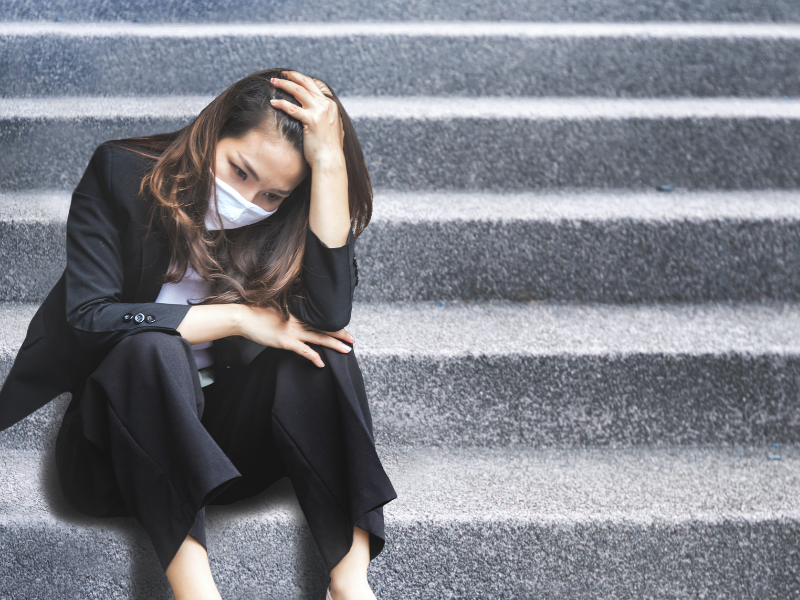During the pandemic, the so-called “laptop class” of professional workers fared fairly well. They were able to maintain social distance from others while still working to earn income. Many of these workers found that remote jobs allowed them to create a healthier work-life balance, so they abandoned their former desk jobs in favor of a more flexible lifestyle.
In stark contrast, working-class adults who couldn’t perform their jobs from home have been hit hard. Those who continued to work were often placed at a higher risk of COVID-19 exposure. Others suffered more because their employers shut down, resulting in a devastating loss of income. Many small business owners suffered income loss and in some cases were forced to close their businesses permanently.
According to the Long Social Distancing study, the majority of Americans who don’t plan to return to work have a high school education or less (17.6%). Unemployment tended to decrease based on both education level and income, with the highest number of labor non-participation among those who previously earned $10,000 to $20,000 per year. Nonwork was highest among females aged 50-64 (17.5%), followed by male respondents of the same age group (12.9%).
It follows, then, that the most significant impact labor non-participation will have on America lies among lower-income communities — many of whom were likely already struggling to make ends meet.
Federal stimulus programs have been important to these individuals, helping them weather the combined storm of the virus and government-imposed lockdowns and shutdowns. Although these government programs sustained many people throughout the crisis, they also created major problems as we emerge from the worst of the pandemic.
Some unemployed people found that they were better off leaving their jobs and receiving government assistance instead. In many cases, unemployment benefits paid better than the jobs they’d previously occupied. This aggravated pre-existing issues with labor force non-participation, helping to fuel inflation as work stoppages led to disruptions in the supply-chain flow of goods and services.
Worsening the problem even more, many Americans experienced so-called “benefit cliffs” where their government support, such as food stamps, fell off in response to an increase in income. In some cases, families lost government benefits after a comparatively small pay raise. This creates additional disincentives for work.
So, what’s the path forward? In order to get unemployed adults back to work, we’ll need a change in perspective. Work must be regarded as something worthwhile in itself beyond a weekly or biweekly paycheck, because it is. A steady job gives each worker a sense of purpose, provides a stable life to their families, and helps maintain mental health.
Nonwork has a direct impact on children not only in the present, but as research shows it can impact their future, too. It creates perpetuating cycles of dependency that lead to instability for the children in these homes. This creates a systemic crisis in marginalized communities. If our goal is truly to overcome generational poverty, creating a culture that uplifts and prizes work is essential.
It’s essential to address safety-net programs as part of the solution. Programs that help in the immediate aftermath of job loss are not enough. In addition to meeting immediate needs — such as unemployment assistance and food — unemployed individuals need support and encouragement to know that work is beneficial to our mental and social health.
And importantly, safety net programs cannot create disincentives from earning more money and getting ahead in society. Government programs need to be reconfigured so they no longer interfere with the upward economic mobility of individuals and their families. They need to consider the overall well-being of the recipients and their families over the long-term, not just the short-term.
Our ultimate goal should be to help those sidelined by the pandemic reconnect to work — not only for their economic health, but for their mental and emotional wellbeing.
















